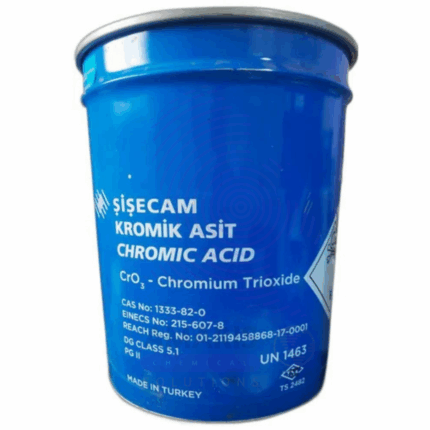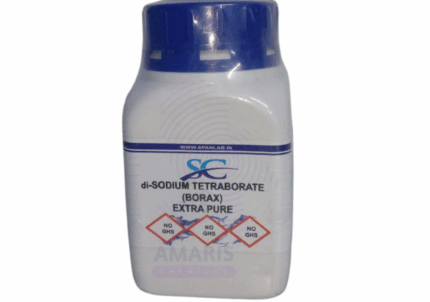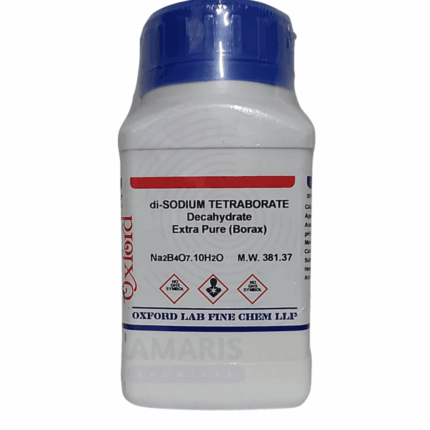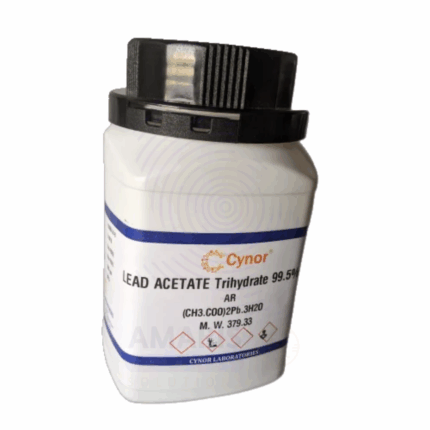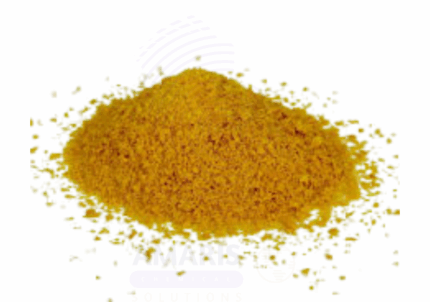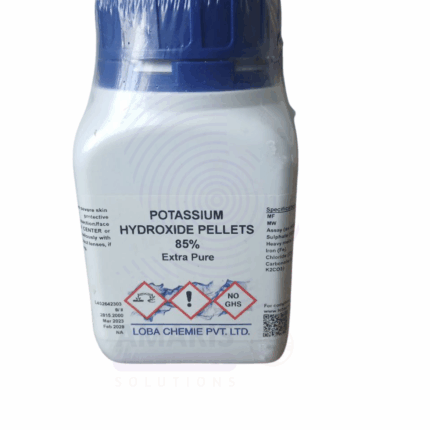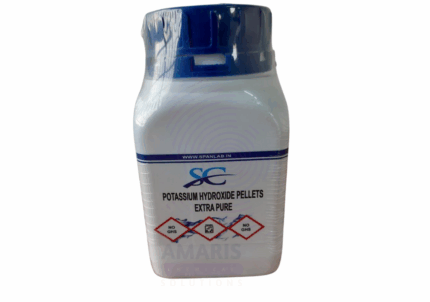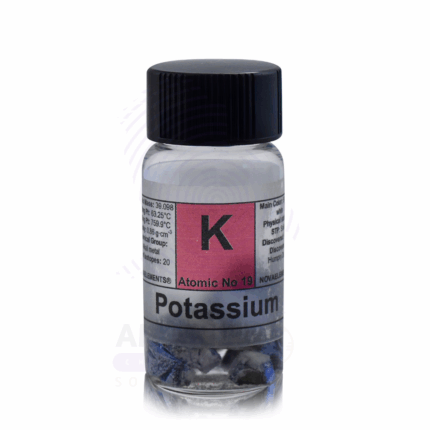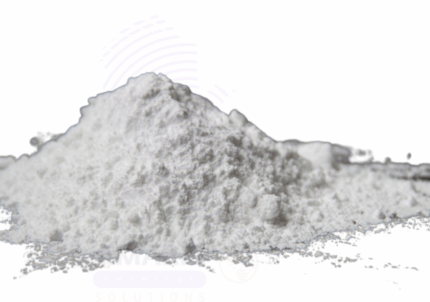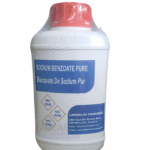
Sodium Benzoate Extra Pure
$ 17.35 Original price was: $ 17.35.$ 17.23Current price is: $ 17.23.

OVEN ELECTRICAL
$ 386.00 Original price was: $ 386.00.$ 371.00Current price is: $ 371.00.
Optical Pins
Whatsapp Order
Optical Pins are precision-engineered small pins used primarily in optical laboratories and equipment for alignment, securing, and positioning optical components such as lenses, mirrors, and prisms. Made from high-grade metals or corrosion-resistant materials, these pins ensure stable and accurate placement of delicate parts during assembly or experimental setups. Their fine tips and consistent dimensions provide reliable fixation without damaging sensitive optical surfaces. Optical pins are essential for maintaining optical path accuracy and are commonly used in microscopy, laser systems, spectrometry, and other photonics applications.
Description
Table of Contents
Toggle
Optical Pins
Primary Uses
- Laboratory and Optical Equipment Applications
- Securing lenses, mirrors, and other optical elements in mounts or holders.
- Aligning components in optical benches and experimental setups.
- Facilitating precise adjustments in laser and spectroscopy equipment.
- Maintaining stability of delicate optical assemblies during experiments or demonstrations.
Secondary Uses
- Research and Manufacturing Applications
- Used in the fabrication and calibration of optical devices.
- Holding components during polishing, coating, or inspection processes.
KEY PRODUCT FEATURES
1. Basic Identification Attributes
- Material: Stainless steel, brass, or other corrosion-resistant metals.
- Design: Fine, sharp tips with consistent diameter and length.
- Sizes: Available in various lengths and diameters to suit different optical components.
2. Physical & Chemical Properties
- Corrosion Resistance: Resistant to oxidation and environmental degradation.
- Mechanical Strength: High tensile strength to avoid bending or breaking during use.
- Surface Finish: Smooth, polished surface to prevent damage to optical elements.
3. Safety & Hazard Attributes
- Sharp tips pose puncture risk; handle with care.
- Small size requires cautious handling to prevent loss or accidental ingestion.
4. Storage & Handling Attributes
- Store in labeled, secure containers to avoid loss or damage.
- Use tweezers or appropriate tools to handle pins safely.
5. Regulatory & Compliance Attributes
- Manufactured in compliance with laboratory equipment standards ensuring precision and safety.
6. Environmental & Health Impact
- Made from recyclable metals.
- No hazardous emissions during normal use.
SAFETY HANDLING PRECAUTIONS
Safety Handling Precautions
- Handle with protective gloves to avoid injury.
- Keep away from children and untrained personnel.
First Aid Measures
- In case of puncture wounds, clean wound thoroughly and seek medical attention if necessary.
Firefighting Measures
- Non-flammable materials.
- Use appropriate extinguishing methods for surrounding materials in case of fire.
Related products
Chromic Acid
Chromic Acid is a powerful oxidizing agent, typically available as a bright orange-red crystalline solid or concentrated solution containing chromium trioxide (CrO₃) dissolved in sulfuric acid. It is a highly corrosive and strong acid used predominantly in industrial applications such as metal finishing, cleaning, and surface treatment. Chromic acid is valued for its excellent oxidative and cleaning properties, particularly in chromium plating, anodizing, and etching processes. Due to its toxicity and environmental hazards, its handling and disposal are strictly regulated. It plays a crucial role in chemical synthesis, laboratories, and manufacturing.
Di-sodium Tetraborate Borax Extra Pure
Di-sodium Tetraborate Borax Extra Pure is a high-purity boron compound widely used in laboratory applications for its buffering, emulsifying, and fluxing properties. In analytical chemistry, it serves as a reagent in qualitative and quantitative analysis, particularly in flame tests and as a flux in the preparation of glass beads for spectroscopy. Its buffering capacity is valuable in maintaining pH stability in various solutions, while its detergent-like action supports cleaning and sample preparation. This extra pure grade ensures minimal contaminants, making it ideal for precision work in research, teaching, and industrial laboratories. Store in a cool, dry environment in a well-sealed container.
Double, Triple, Single Lab Pulley
Lab pulleys—available as single, double, or triple configurations—are precision-engineered mechanical devices used in laboratory settings to change the direction of force or lift loads with reduced effort. Typically made from durable materials such as metal alloys or hard plastics, these pulleys consist of grooved wheels that guide ropes or cords smoothly during experiments and mechanical setups. Single pulleys have one wheel, doubles have two, and triples have three wheels, allowing different mechanical advantages depending on the setup. Lab pulleys are essential in physics education, mechanical experiments, and engineering demonstrations where principles of force, tension, and motion are studied.
Lead Acetate Extra Pure
Lead Acetate Extra Pure is a crystalline compound with the chemical formula Pb(C₂H₃O₂)₂·3H₂O, often referred to as sugar of lead due to its sweet taste (though it is highly toxic). In laboratory environments, it is primarily used for analytical chemistry, precipitation reactions, and as a reagent for detecting hydrogen sulfide gas, with which it forms black lead sulfide. It is also utilized in organic synthesis and historical pigment studies. Due to its toxicity, handling requires strict safety measures, including gloves, goggles, and proper ventilation. Its extra pure grade ensures minimal contaminants, making it suitable for precise experimental procedures.
Poly Aluminium Chloride Extra Pure
Poly Aluminium Chloride Extra Pure is a high-efficiency inorganic coagulant widely used in water treatment, paper manufacturing, and various industrial processes. In its extra pure grade, PAC is characterized by a high degree of purity, minimal impurities, and consistent performance, making it suitable for critical applications requiring stringent quality control.
PAC works by neutralizing the negative charges on suspended particles, allowing them to coagulate and settle quickly. It is highly effective in clarifying drinking water, treating industrial and municipal wastewater, and removing heavy metals, organic matter, and pathogens. Additionally, in the paper industry, PAC improves paper strength and retention of fillers.
This compound should be handled with appropriate PPE, including gloves and eye protection, and stored in a cool, dry, and well-ventilated area, away from reactive substances. PAC is non-flammable but may cause irritation on contact with skin or eyes.
Potassium Hydroxide Pellets Extra Pure
Potassium Hydroxide Pellets Extra Pure are solid, white, hygroscopic pellets known for their strong alkalinity and high reactivity. This compound is widely used in laboratories for pH adjustment, titrations, and chemical synthesis. In industrial settings, it plays a key role in soap and detergent manufacturing, biodiesel production, and water treatment processes. Its ability to absorb moisture and carbon dioxide from the air requires careful storage in airtight containers. With exceptional purity and consistent performance, it is a critical reagent in both academic and industrial chemistry environments.
Potassium Metal Extra Pure
Potassium Metal Extra Pure is a highly reactive, soft, silvery alkali metal that is typically stored under mineral oil to prevent oxidation. It is primarily used in laboratory demonstrations and synthesis as a powerful reducing agent due to its vigorous reaction with water, producing potassium hydroxide and hydrogen gas. This extra pure grade ensures high chemical integrity, making it ideal for sensitive applications in research, organic chemistry, and material science. Due to its reactivity, it must be handled with extreme caution under controlled conditions and proper safety measures.
Powder Sodium Mono Fluoro Phosphate Extra Pure
Powder Sodium Mono Fluoro Phosphate Extra Pure is a fine, white crystalline compound widely used in dental and pharmaceutical formulations. Known for its role as a source of fluoride, it is a key active ingredient in many toothpastes, where it helps strengthen tooth enamel and prevent dental cavities. In laboratory environments, its extra pure grade ensures suitability for high-precision chemical synthesis and formulation testing. The compound is also utilized in specialty applications involving fluorination processes, offering reliable stability and consistent fluoride release.


 Preservatives(food)
Preservatives(food) Flavor Enhancers
Flavor Enhancers Acidulants
Acidulants Sweeteners
Sweeteners Antioxidants
Antioxidants Colorants(food)
Colorants(food) Nutraceutical Ingredients (food)
Nutraceutical Ingredients (food) Nutrient Supplements
Nutrient Supplements Emulsifiers
Emulsifiers
 Collectors
Collectors Dust Suppressants
Dust Suppressants Explosives and Blasting Agents
Explosives and Blasting Agents Flocculants and Coagulants
Flocculants and Coagulants Frothers
Frothers Leaching Agents
Leaching Agents pH Modifiers
pH Modifiers Precious Metal Extraction Agents
Precious Metal Extraction Agents
 Antioxidants(plastic)
Antioxidants(plastic) Colorants (Pigments, Dyes)
Colorants (Pigments, Dyes) Fillers and Reinforcements
Fillers and Reinforcements Flame Retardants
Flame Retardants Monomers
Monomers Plasticizers
Plasticizers Polymerization Initiators
Polymerization Initiators Stabilizers (UV, Heat)
Stabilizers (UV, Heat)
 Antifoaming Agents
Antifoaming Agents Chelating Agents
Chelating Agents Coagulants and Flocculants
Coagulants and Flocculants Corrosion Inhibitors
Corrosion Inhibitors Disinfectants and Biocides
Disinfectants and Biocides Oxidizing Agents
Oxidizing Agents pH Adjusters
pH Adjusters Scale Inhibitors( water)
Scale Inhibitors( water)
 Antioxidants(cosmetic)
Antioxidants(cosmetic) Emollients
Emollients Fragrances and Essential Oils
Fragrances and Essential Oils Humectants
Humectants Preservatives
Preservatives Surfactants(cosmetic)
Surfactants(cosmetic) Thickeners
Thickeners UV Filters
UV Filters
 Fertilizers
Fertilizers Soil Conditioners
Soil Conditioners Plant Growth Regulators
Plant Growth Regulators Animal Feed Additives
Animal Feed Additives Biostimulants
Biostimulants Pesticides (Herbicides, Insecticides, Fungicides)
Pesticides (Herbicides, Insecticides, Fungicides)
 Active Pharmaceutical Ingredients (APIs)
Active Pharmaceutical Ingredients (APIs) Excipients
Excipients Solvents(pharmaceutical)
Solvents(pharmaceutical) Antibiotics
Antibiotics Antiseptics and Disinfectants
Antiseptics and Disinfectants Vaccine Adjuvants
Vaccine Adjuvants Nutraceutical Ingredients (pharmaceutical)
Nutraceutical Ingredients (pharmaceutical) Analgesics & Antipyretics
Analgesics & Antipyretics
 Analytical Reagents
Analytical Reagents Solvents(lab)
Solvents(lab) Chromatography Chemicals
Chromatography Chemicals Spectroscopy Reagents
Spectroscopy Reagents microbiology-and-cell-culture-reagents
microbiology-and-cell-culture-reagents Molecular Biology Reagents
Molecular Biology Reagents Biochemical Reagents
Biochemical Reagents Inorganic and Organic Standards
Inorganic and Organic Standards Laboratory Safety Chemicals
Laboratory Safety Chemicals Specialty Laboratory Chemicals(Special Laboratory Equipment)
Specialty Laboratory Chemicals(Special Laboratory Equipment)
 Demulsifiers
Demulsifiers Hydraulic Fracturing Fluids
Hydraulic Fracturing Fluids Scale Inhibitors(oil)
Scale Inhibitors(oil) Surfactants(oil)
Surfactants(oil) Drilling Fluids
Drilling Fluids
 Dyes and Pigments
Dyes and Pigments Bleaching Agents
Bleaching Agents Softening Agents
Softening Agents Finishing Agents
Finishing Agents Antistatic Agents
Antistatic Agents
 Admixtures
Admixtures Waterproofing Agents
Waterproofing Agents Sealants and Adhesives
Sealants and Adhesives Curing Compounds
Curing Compounds Concrete Repair Chemicals
Concrete Repair Chemicals Anti-Corrosion Coatings
Anti-Corrosion Coatings
 Surfactants(cleaning)
Surfactants(cleaning) Builders
Builders Enzymes
Enzymes Solvents (Cleaning)
Solvents (Cleaning) Fragrances
Fragrances
 Electronic Chemicals
Electronic Chemicals Catalysts
Catalysts Lubricants
Lubricants Photographic Chemicals
Photographic Chemicals Refrigerants
Refrigerants Automotive chemicals
Automotive chemicals Pyrotechnic Chemicals
Pyrotechnic Chemicals
 Biodegradable Surfactants
Biodegradable Surfactants Bio-based Solvents
Bio-based Solvents Renewable Polymers
Renewable Polymers Carbon Capture Chemicals
Carbon Capture Chemicals Wastewater Treatment Chemicals
Wastewater Treatment Chemicals
 Pigments
Pigments Solvents(paint)
Solvents(paint) Specialty Coatings
Specialty Coatings Binders/Resins
Binders/Resins Additives
Additives Driers
Driers Anti-Corrosion Agents
Anti-Corrosion Agents Functional Coatings
Functional Coatings Application-Specific Coatings
Application-Specific Coatings
 Fresh Herbs
Fresh Herbs Ground Spices
Ground Spices Whole Spices
Whole Spices Spice Blends
Spice Blends Dried Herbs
Dried Herbs
 Leavening Agents
Leavening Agents Dough Conditioners
Dough Conditioners Flour Treatments
Flour Treatments Fat Replacers
Fat Replacers Decoratives
Decoratives Preservatives(baking)
Preservatives(baking)
 Plasticizers & Softeners
Plasticizers & Softeners Reinforcing Agents
Reinforcing Agents Adhesion Promoters
Adhesion Promoters Vulcanizing Agents
Vulcanizing Agents Antidegradants
Antidegradants Blowing Agents
Blowing Agents Fillers & Extenders
Fillers & Extenders Accelerators & Retarders
Accelerators & Retarders

